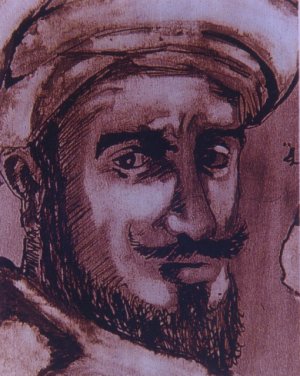Wandering Wonder Ibn Batuta
by Dr. Jyotsna Kamat
First Online: April 01, 2004
Page Last Updated: December 07, 2024
Ibn Batuta was born in Tangier in Morocco in 1305 A.D. He traveled in about forty-four countries of two continents risking life and limb many times. He was a devout Muslim and not only a pilgrim, but a jurist, mystic, politician, a courtier at times, a diplomat and an explorer. In twenty nine years of endless traveling, he covered about 75,000 miles almost three times the distance Marco Polo, the great adventurer before him, covered. He returned to his native land after twenty nine years of land and sea travel and at his Sultan's command wrote the Rehla or a travel book covering several adventures in African deserts, Indian countries (states) and islands in far east and China. He spent seven years at the court of Mohammed Bin Tughluk as a judge and finally as ambassador to China! He has left a wonderful record of socio-religious life of the places he visited which includes coastal Karnataka.

Ibn Batuta (1305-1369 A.D.)
Wandering Wonder of Middle Ages
The town of Honavar or Hinawr as Ibn Batuta calls it, was a big port and capital city in his time. he was guest of Jamaluddur-- the governor or ruler of the province, and was a kudatory of Bijayanagar king "Haryah" (Hariappa or Harihara I.) Ibn Batuta noticed there are thirteen schools for girls, and twenty-three schools for boys, the like of which he had not seen elsewhere. He further states that the women knew the great Quran by heart. Perhaps, the schools he mentions were Maqtabs (elementary schools )attached to Masjids where children were taught to read, write, and recite Quran. Besides he mentions that the girls were fair and beautiful and wore rings in their nose. Obviously they did not wear burqa or veil since he noticed nose ornaments worn by women.
By the standard of middle ages, coastal Karnataka was ahead in Muslim education, a rare happening even now, compared with existence of thirteen schools in the fourteenth century, however small they were.
Ibn Batuta has further left interesting account of a dinner he had with sultan Iamaluddin. "Four small chairs were placed on the ground and ... each one of us sat likewise on a chair. A copper table is brought, which is known as Khawanja, on which is placed a dish of the same metal known as talam (thali.) Then appears a beautiful girl, wrapped in silk sari who placed the pots with food before the individual. She holds a large copper vessel from which she picks up a ladleful of rice, and serves it on the dish, pours ghee over it, and adds pickles of pepper, of green ginger, of lemon, and of mangos. The man eats a little rice with pickles. When the food placed before him is consumed, she takes a second ladleful (of rice) and serves cooked foul on a plate and the rice is eaten there with also. When the second course is over, she takes another ladleful and serves another variety of chicken which is also eaten with rice.
When chicken is consumed, fish of different kind is served, with which also one eats rice. When fish courses are over, vegetables cooked in ghee and milk (payasam perhaps?) are served. When all dishes are eaten, "Kushan that is curded milk is served which finishes the meal. At the close one drinks hot water, for cold water would harm the people in the rainy season."
Thus, it is clear that there was hardly any difference between the meals of non-Brahmin Hindus and Muslims. The latter, even of the ruling class became fully localized as far as food habits, female education and dress were concerned. The sultan wore silk clothes and wore shawls. When he rode, a cloak he did had. But over it again he wore a shawl--a typical Indian fashion.
Ibn Batuta had traveled through all the countries of Asia and Africa where
Islam flourished. His stay in India, Maldives an Ceylon for fourteen years provides
valuable account of socio-cultural scene of those times.
![]()

